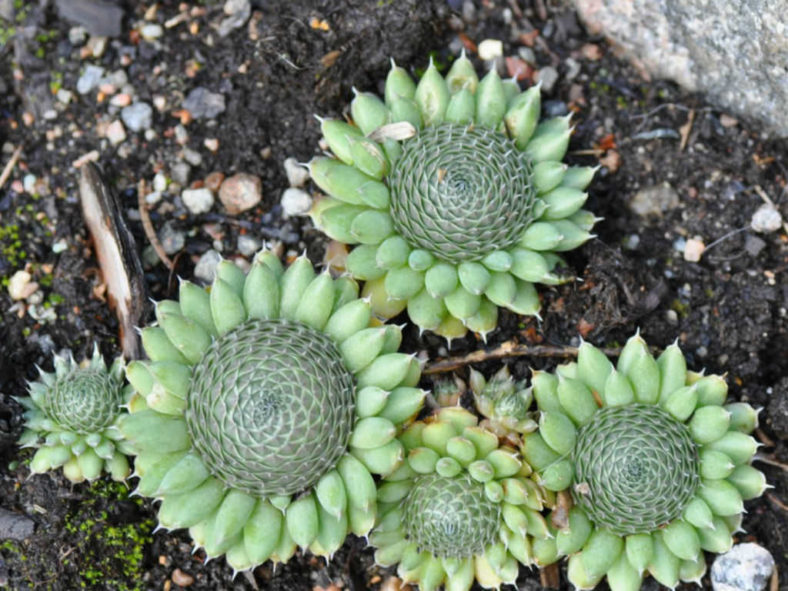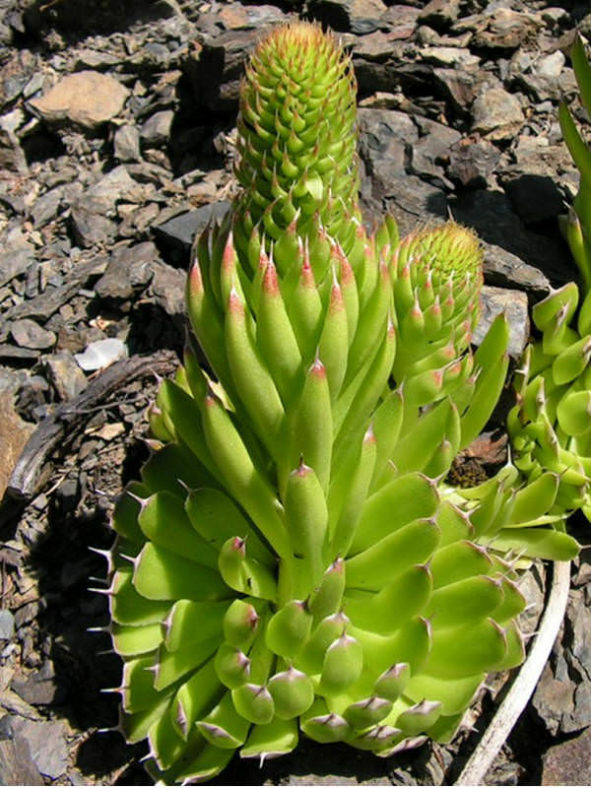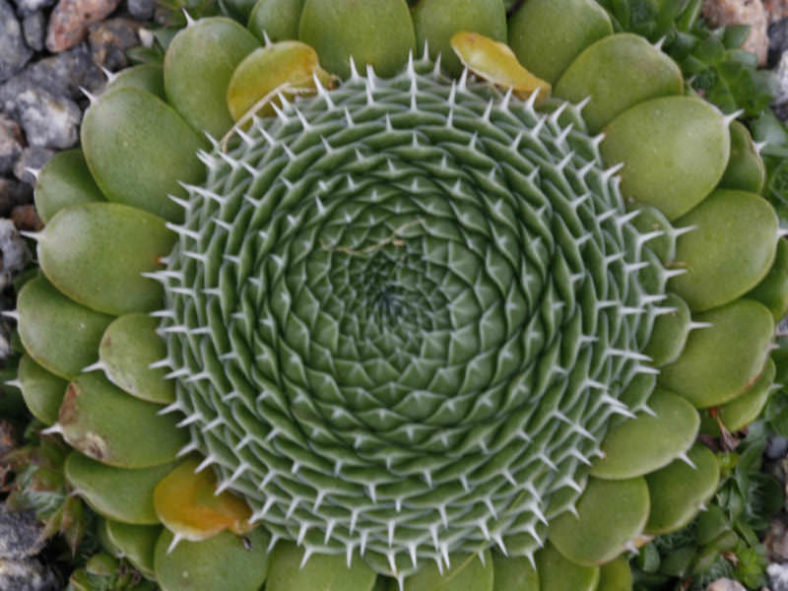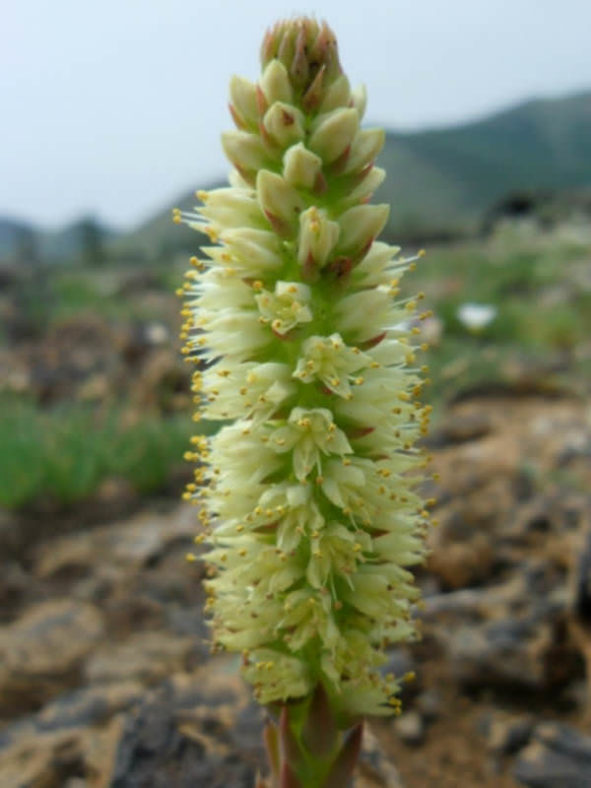Scientific Name
Orostachys spinosa (L.) Sweet
Common Name(s)
Chinese Dunce Cap, Dunce Cap, Dunce's Caps, Spiny Dunce's Cap, Spiny Pennywort
Synonym(s)
Cotyledon spinosa, Crassula spinosa, Orostachys chlorantha, Sedum spinosum, Umbilicus spinosus
Scientific Classification
Family: Crassulaceae
Subfamily: Sedoideae
Tribe: Sedeae
Subtribe: Umbilicinae
Genus: Orostachys
Etymology
The specific epithet "spinosa" (pronounced "spy-NO-suh") means "thorny, prickly" and refers to the spiny tips of the leaves of this species.
Origin
Orostachys spinosa is native to the arid areas in Mongolia, Russia, China, and Kazakhstan.
Description
Orostachys spinosa is a small, slow-growing succulent that forms rosettes of thick, fleshy, grey-green leaves with soft, white, spiny tips. The rosettes can reach a diameter of 2.4 inches (6 cm). The leaves are arranged in a crowded symmetrical pattern, usually curve inwards, but the longer outer leaves sometimes open, giving the rosette a sunflower-like effect. The cauline leaves and bracts are narrowly oblong to linear or linear-lanceolate, measuring up to 0.6 inches (1.5 cm) long and 0.2 inches (0.5 cm) wide.
The flowering stem, which can grow up to 12 inches (30 cm) tall, is produced from the center of the rosettes. The tiny greenish-yellow flowers appear in dense cylindrical racemes that can reach up to 8 inches (20 cm) in length. This plant is monocarpic, and the rosette dies once it flowers, but new offsets are usually developed first.

Hardiness
USDA hardiness zones 4a to 8b: from -30°F (-34.4°C) to 20°F (-6.7°C).
How to Grow and Care
As with most similar genera of the Crassulaceae family, this plant can survive in relatively poor soil so long as it is well-draining. This genus is very cold-hardy and can survive temperatures to -30°F (-34°C). Allow soil to dry to the touch between waterings and avoid getting water on the rosettes. Orostachys plants grow actively in spring and summer. They require some bright light and do not tolerate high humidity well.
Orostachys self-propagates through offshoots at a given time. Thus, one plant will form a dense mat of many. Propagation is primarily through offset separation.
To separate an offset, remove soil from its base to find the stolon (the thick root that attaches the pup to the mother plant). It is best to use an offset that has already established its roots. Cut the stolon close to the pup (to discourage roots growing from the stolon). Place the offset into a small pot with well-draining, sandy soil. Do not water until new growth is noted.
Learn more at How to Grow and Care for Orostachys.
Links
- Back to genus Orostachys
- Succupedia: Browse succulents by Scientific Name, Common Name, Genus, Family, USDA Hardiness Zone, Origin, or cacti by Genus
Photo Gallery
Click on a photo to see a larger version.


